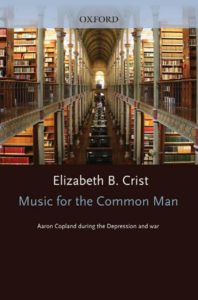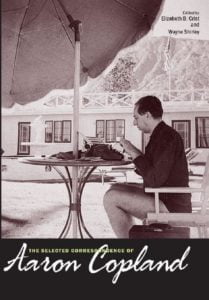Come join us now, and enjoy playing your beloved music and browse through great scores of every level and styles!
Can’t find the songbook you’re looking for? Please, email us at: sheetmusiclibrarypdf@gmail.com We’d like to help you!
Table of Contents
Copland portrait (1975 documentary)
Browse in the Library:
Or browse in the categories menus & download the Library Catalog PDF:

Please, subscribe to our Library.
If you are already a subscriber, please, check our NEW SCORES’ page every month for new sheet music. THANK YOU!
Who Was Aaron Copland?

Best Sheet Music download from our Library.
Aaron Copland (1900-1990) was an American composer, composition teacher, writer, and conductor, often referred to as “the Dean of American Composers.” He achieved something remarkably difficult: he created a sophisticated and modern musical language that also felt distinctly, powerfully, and accessibly American. His most famous works, evoking the vast landscapes, pioneer spirit, and folk traditions of the United States, have become embedded in the nation’s cultural consciousness.
His Life in Brief
- Early Life (1900-1925): Born in Brooklyn, New York, to Lithuanian-Jewish immigrants, Copland was not a child prodigy. He discovered music gradually and began formal composition lessons in his late teens. Dissatisfied with the training available in America, he became one of the first American students of the famed pedagogue Nadia Boulanger in Paris (1921-1924). This exposure to European modernism (like Stravinsky and Les Six) was formative.
- The “Modernist” Years (Late 1920s – Early 1930s): Returning to America, Copland initially wrote complex, jazzy, and rhythmically sharp works that reflected the modernist spirit of the era. Pieces like the Piano Variations (1930) are intellectually rigorous but harmonically dissonant and less accessible to a general audience.
- The “American” Period (Mid-1930s – 1950s): This is the era for which he is most famous. Influenced by the Great Depression and a desire to connect with a wider public, Copland consciously simplified his style. He began incorporating folk songs, hymns, and cowboy tunes into his music, creating a new American symphonic sound. This period produced his iconic ballet scores:
- Billy the Kid (1938)
- Rodeo (1942)
- Appalachian Spring (1944) – for which he won the Pulitzer Prize.
- Later Years (1960s onward): After the 1950s, Copland largely stopped composing and turned his attention to conducting, teaching, and mentoring. He began experimenting with the twelve-tone technique (serialism) pioneered by Arnold Schoenberg, which he had previously avoided. While these later works are respected, they never achieved the popular acclaim of his “American” works. He continued to be a revered elder statesman of American music until his death from Alzheimer’s disease in 1990.

Browse in the Library:
Or browse in the categories menus & download the Library Catalog PDF:
His Musical Style: The “American Sound”
Copland’s sheet music download.
Copland’s signature style is instantly recognizable. He created a musical language that felt both fresh and familiar by blending modern techniques with folk-inspired melodies.
Key characteristics include:
- “Open” Harmony: Copland made extensive use of open fifths and fourths (chords that sound hollow or spacious). This creates a sense of vast, uncluttered landscapes, like the American prairie or a grand canyon.
- Clear, Transparent Orchestration: He had a genius for orchestration, using instruments in a way that sounds clean and brilliant. The woodwinds and brass are often highlighted, with crisp percussion.
- Folk Melodies and Quotations: He didn’t just quote folk tunes; he absorbed their essence. “Simple Gifts” in Appalachian Spring is the most famous example, but the melodic shapes of his original themes often feel like folk songs.
- Syncopated Rhythms and Changing Meters: Influenced by jazz and Latin American music, his works are often rhythmically vibrant and unpredictable, giving them a sense of energy and forward motion.
- Emotional Range: His music can be stately and solemn (as in the beginning of Fanfare for the Common Man), exuberantly joyful (the “Hoe-Down” from Rodeo), or tender and pastoral (much of Appalachian Spring).
Why He Is So Important and Influential
Aaron Copland’s influence is monumental and can be felt across the entire American musical community for several key reasons:
- He Defined an American Musical Identity.
Before Copland, American “classical” music was largely seen as derivative of European traditions. Along with contemporaries like George Gershwin, Copland forged a sound that was undeniably American. His music provided a sonic portrait of the nation’s history, ideals, and landscapes, giving American concert music its own unique voice on the world stage. - He Bridged the Gap Between the Avant-Garde and the Public.
Copland proved that music could be artistically sophisticated, modern, and still be beloved by the general public. He rejected the idea that composers had to write only for a small, elite audience. By incorporating folk elements and simplifying his harmonic language, he created works that resonated deeply with everyday people, making the concert hall a more accessible and democratic space. - He Was a Prolific and Influential Teacher and Mentor.
Through his teaching at institutions like the Tanglewood Music Center and his widely read books (What to Listen for in Music), Copland shaped generations of American composers. His students include luminaries like Leonard Bernstein, Elliott Carter, and Alberto Ginastera. He was a generous supporter of his colleagues’ work, helping to build a supportive ecosystem for American music. - His Music Became a Cultural Touchstone.
Pieces like Fanfare for the Common Man and Appalachian Spring have transcended the concert hall. They are used in political conventions, documentaries, advertisements, and films, becoming shorthand for American dignity, optimism, and resilience. His own film scores for Of Mice and Men (1939) and The Heiress (1949) helped elevate the artistic status of Hollywood music. - He Championed American Music.
As a conductor, writer, and organizer, Copland tirelessly promoted the works of other American composers. He co-founded the American Composers Alliance and organized concerts dedicated to new American music. He was not just building his own career; he was building an entire infrastructure for American classical music.
In conclusion, Aaron Copland was more than just a composer of great music. He was a cultural architect who gave America a sound it could recognize as its own. He demonstrated that art music could be both popular and profound, and through his work and mentorship, he laid the foundation for the vibrant and diverse landscape of American classical music that followed.
